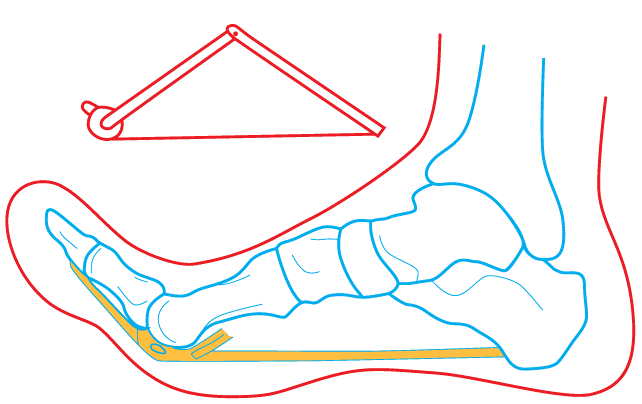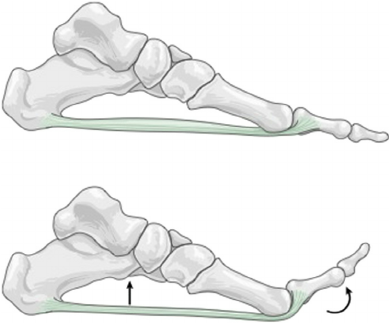If there is damage to the plantar fascia or the anatomy of the foot does not allow the windlass mechanism to function, the energy needed to walk rises significantly. Many times the person will walk with a limp due to the lack of push off power. The foot and ankle are more unstable and are susceptible to injuries.

If you are having heel pain or pain in your foot/feet you should seek the advice of a Physical Therapist. They are highly educated healthcare professionals that specialize in function. They are able to evaluate your condition and treat it. They will evaluate the way you walk or run and make suggestions as to how you might have to change your mechanics to avoid injuries. They can show you numerous exercises that will involve the entire lower extremity.

Weakness in the hips can lead to excessive pronation in the foot at the mid-stance position. The excessive pronation can make the windlass mechanism non-functional. They might suggest that you get a pair of “over-the-counter” orthotics or inserts for your shoes. These inserts should be hard plastic to help support the arches and reduce the strain on the plantar fascia. In some cases, the Physical Therapist might fabricate a pair of “custom” orthotics that is specially designed for your feet. The Physical Therapist might refer you to a podiatrist if they do not provide these services. The Physical Therapist can treat your symptoms and help you return to pain-free status when you walk or run.
The foot and ankle are under a tremendous amount of stress and strain throughout the day. The complex must support the person’s body weight without being injured. The ability of the foot and ankle to support and move one’s body through space is partially dependent upon the windlass mechanism of the plantar fascia. A healthy plantar fascia enables the foot and ankle to move someone through space without pain and without excessive energy expenditure.


